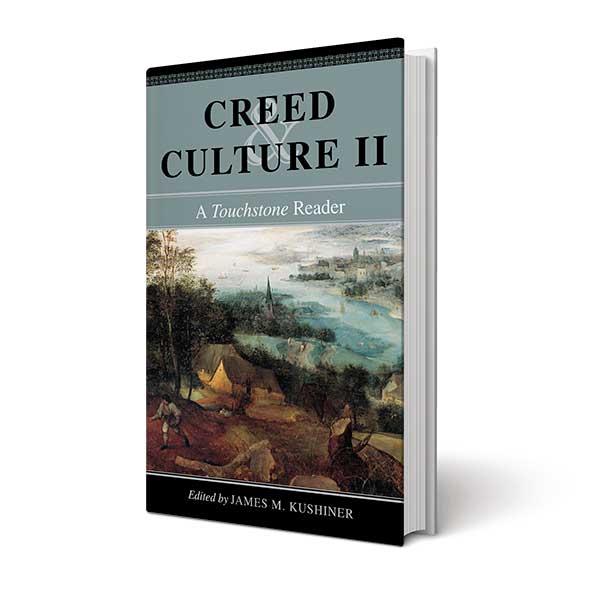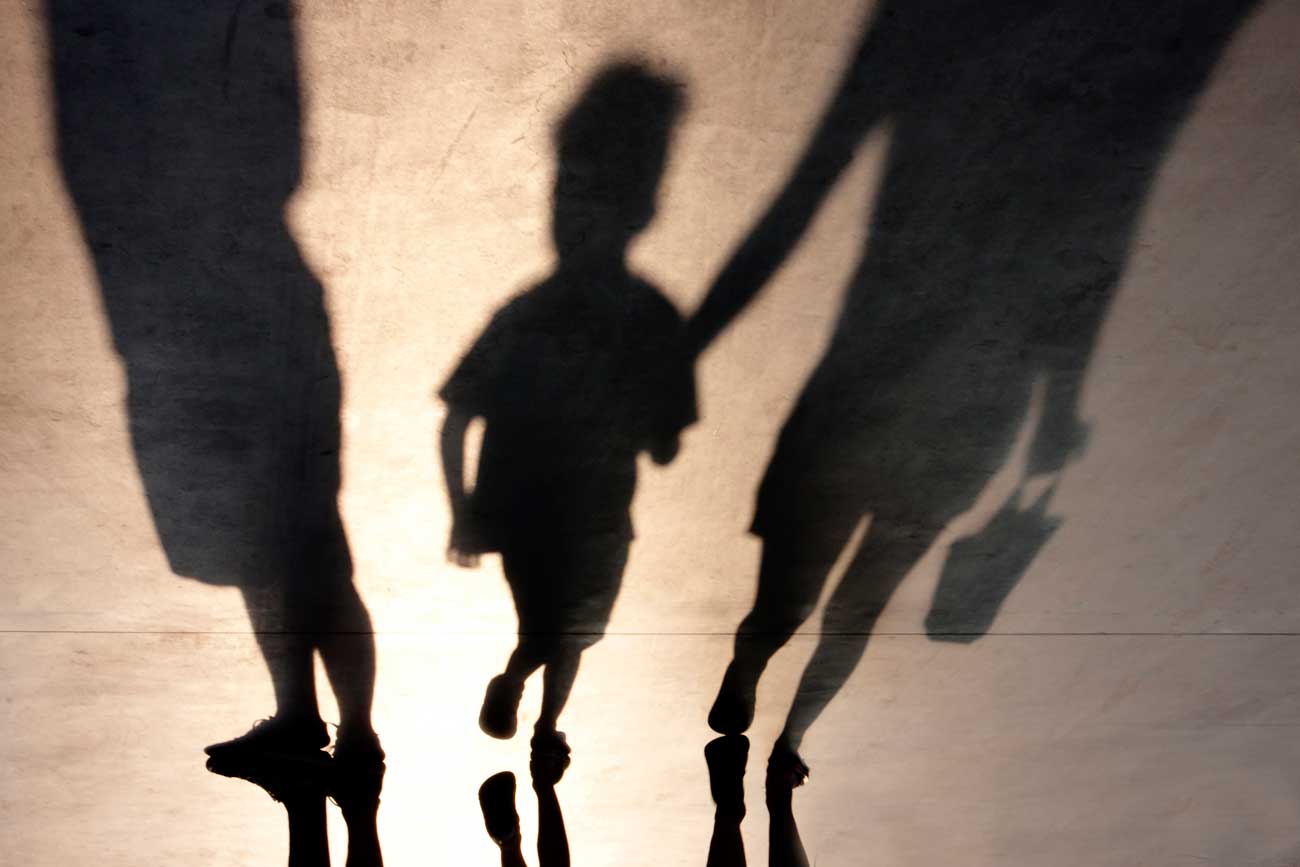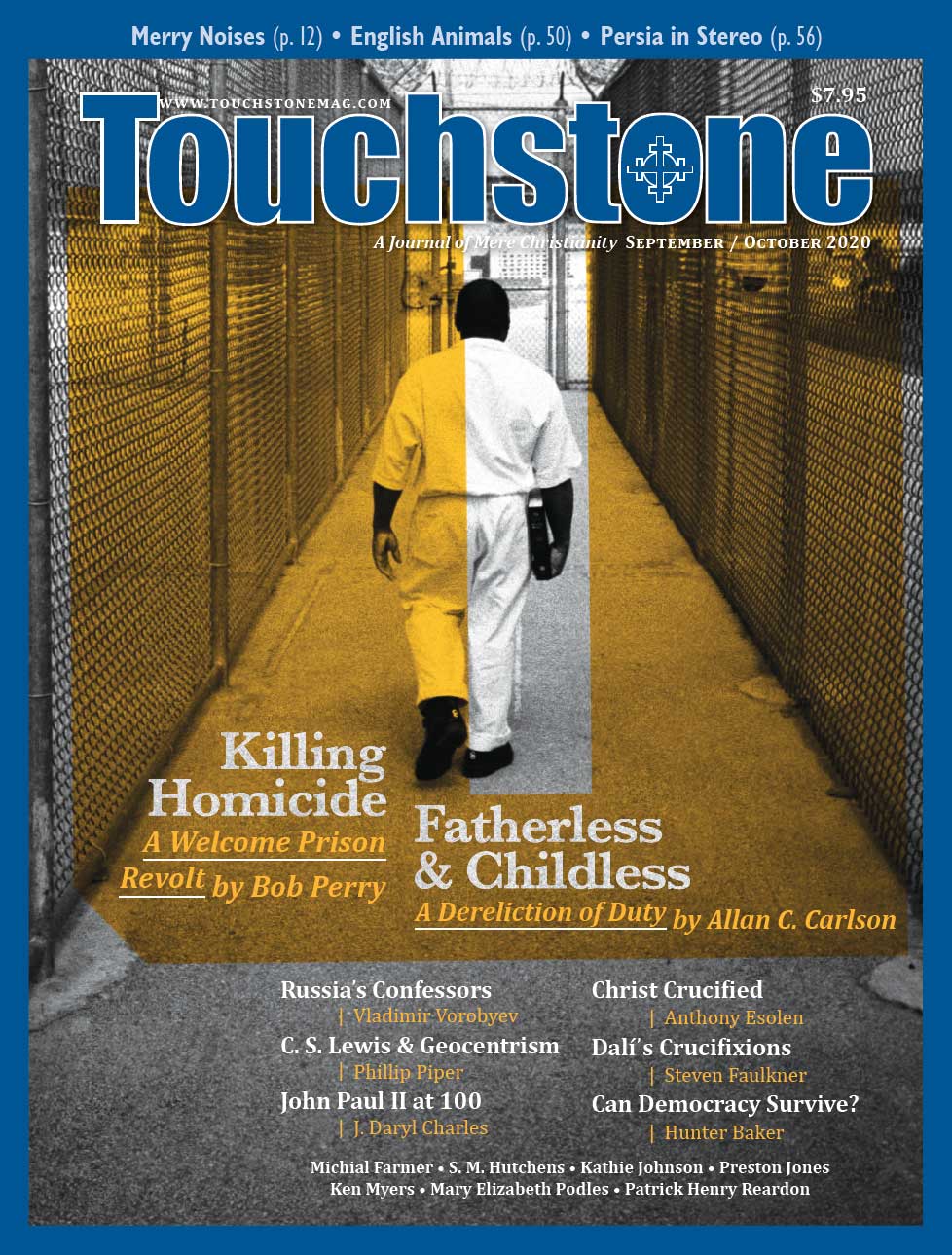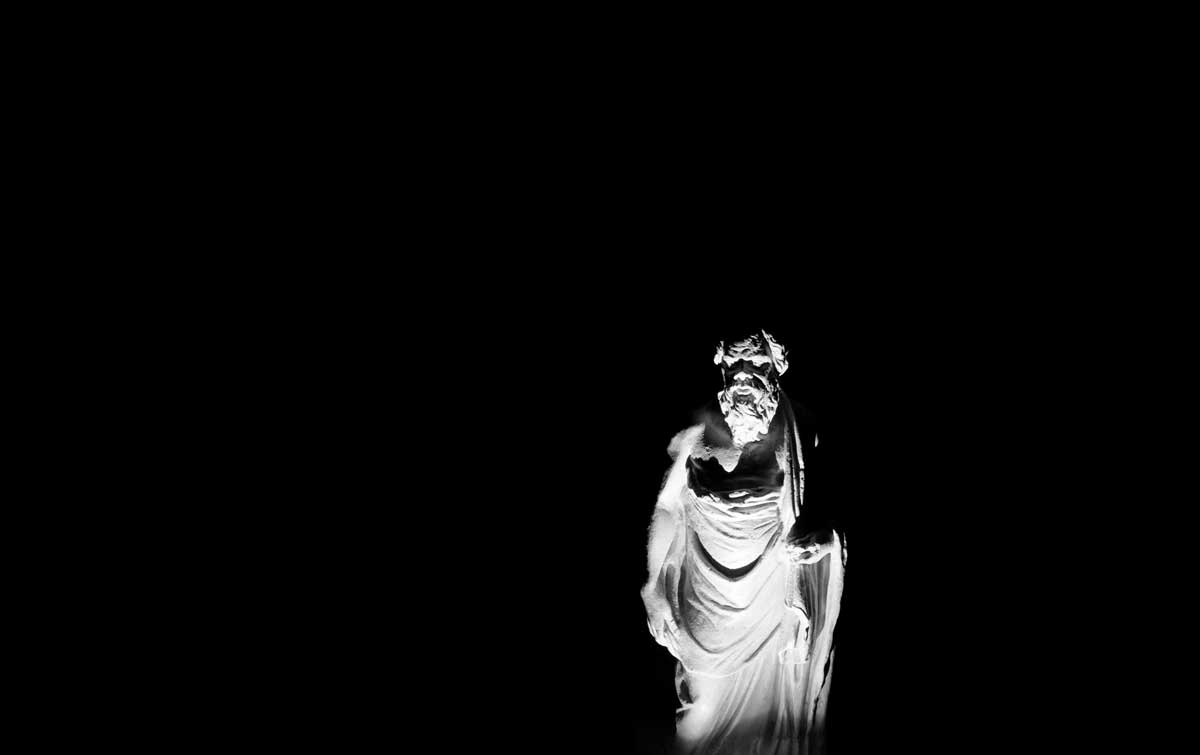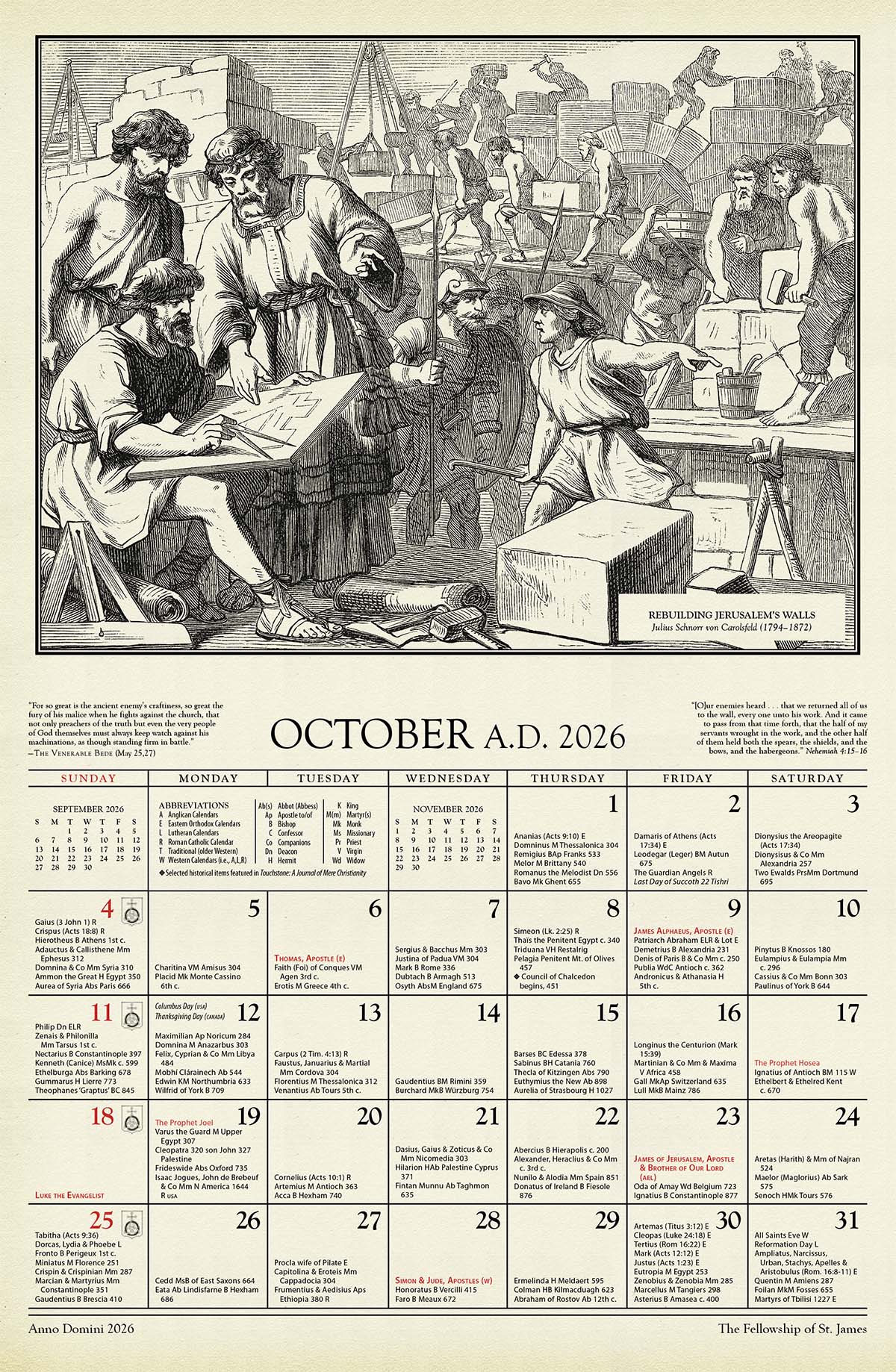Editorial
Fatherless & Childless
Dereliction of Duty Inside & Outside the Church
America's remarkable time of troubles—deadly pandemic, rapid economic collapse, reckless violence, cities on fire, the breakdown of law and order, assaults on the symbols of national identity, the rapid advance of the LBGTQ agenda—has emerged against the backdrop of two demographic trends. Both have religious components.
Fatherlessness & Its Fallout
The first is over a half-century old, once widely discussed, but now a forbidden subject: fatherless boys. Before 1950, and despite recent wars and depressions, about 90 percent of American children grew up living with both parents. The proportion for African-Americans was not appreciably different from that for whites. American family law was undergirded, both directly and indirectly, by long-standing Christian principles: the sanctity of marriage, the confinement of sexual relations to marriage, responsible father headship, and so on.
Then came divergence. By the early 1960s, the figure for African-American children growing up without a father present had climbed to near 25 percent. Daniel Patrick Moynihan, working in the U.S. Department of Labor (and later a Democrat senator from New York), raised an alarm in his famed 1965 report, The Negro Family: The Case for National Action. He traced a new "tangle of pathologies" afflicting urban African-American society, leading to "the deterioration of the Negro family" and a consequent "matriarchal" family structure that left young men without guidance or controls. He carefully linked this development to school failure, juvenile delinquency, entry into gang life, and crime. For example, while young black men represented about five percent of their age cohort, they were a full third of those held in long-term juvenile detention. African-American men, in his telling, were also responsible for nearly half of the most violent crimes, mainly directed against members of their own race. Moynihan's analysis pointed toward a search for ways to improve the job prospects for these young men.
Within a few years, progressive sociologists began denouncing this report for its alleged patriarchal biases and implicit racism. All the same, subsequent research on fatherlessness confirmed Moynihan's key arguments, as summarized in two 1996 books: David Popenoe's Life Without Father and David Blankenhorn's Fatherless America. Such work stimulated both "Fatherhood" and "Marriage" movements among social conservatives. They even gained federal recognition and some funding from the George W. Bush administration.
Alas, in the aggregate, little was gained. The proportion of African-American children growing up in mother-only homes has now reached about 75 percent. White families have seemingly entered their own "tangle of pathologies": 37 percent of white children are now found in single-parent homes, overwhelmingly mother-led. Among Hispanic families, the figure is 58 percent. And the honest research continues to show strong correlations between father absence and school failure, instability, and crime among the affected young men of all races.
Collapse of the Family Order
The other demographic development is a much broader collapse of the American family order, evidenced in both marriage and birth rates. A notable aspect of certain periods in the American past has been a recurrently strong marriage system. In the seventeenth-century Puritan commonwealth, in the whole of 1776 America (even in slave quarters), in the "Victorian" age of the mid-nineteenth century, and in the years 1935 to 1970, marriage became a nearly universal status among adults, and early marriage was the rule. This was in sharp contrast to Old Europe, where nearly a third of adults never married and the marriages that did occur came later in life. In 1959 America, to choose an exemplary year, the average age of first marriage was 20.2 for women and 22.5 for men, and nearly 95 percent of all adults attaining age 30 were or had been married.
Much has changed. Newly released figures show that the average age for first marriage has climbed to a record 28 for women and 30 for men. A full third of Americans reaching age 30 are now "never married." The Covid-19 scare is expected to drive these numbers still higher. In brief (and demographically speaking), we Americans have become Europeans.
The same is true regarding birthrates. Again, Americans in the historical periods noted above were remarkable for the welcome they gave to children. Average family size commonly reached eight to nine offspring per home in those years, among the highest figures recorded in human history; contrary to popular myth, most of those children survived to adulthood. While the Baby Boom of the twentieth century began at a much lower base, marital fertility nonetheless doubled between 1935 and 1960. The average number of children born per woman climbed from two to nearly four. In every period, this high fertility was closely linked to a Christian-inspired opposition to both contraception and abortion, codified most completely in the Comstock laws of the late nineteenth century. During the twentieth century's Baby Boom, Roman Catholic fertility soared well above the American average, a new expression of this religiously grounded familism.
Beginning in the late 1960s, American fertility fell sharply. This collapse was particularly noticeable among Roman Catholics, but could be seen in most American religious groups. Still, as late as 2005, two researchers (Ron Lesthaeghe and Lisa Neidert) could find "American exceptionalism" in fertility, which kept the birthrate at or near the generational replacement level of an average of two births per woman, compared to sub-replacement levels across Europe. This they traced to "a non-negligible section of the population" found in the Midwest, the Great Plains, and the South, who were "much more rural than metropolitan, [and] less well educated," and who adhered "more to Evangelical Christianity or Mormonism."
That, too, has now ended. Figures released this past May show that American fertility fell in 2019 to a record low of 1.71 births per woman, close to the 1.6 figure found in the European Union. Once again, we Americans have become Europeans.
Why It Matters
Why do these changes in birth and marriage rates matter? At one level, Martin Luther warned of the dangers posed to social order by too many unmarried, childless men loafing by day and carousing by night. The Puritans would periodically round up such fellows above a certain age and bind them out as servants to responsible male householders.
More deeply, the question cuts to the very meaning and purpose of existence. Why are we here? What is our purpose? How does God want us to live our lives? On the matters in question here, the Christian answer comes from Genesis 1 and 2, with elaborations from the Gospels and Epistles. And it points, for most, to one-flesh marital unions and the begetting of children as pleasing to the Creator and the source of fulfillment and happiness for his creatures.
Reaping Consequences & Hoping for Renewal
What ties all of these observations together? Simply put, we Americans now reap the consequences of the failure of Christian family and sexual ethics at both the legal and the catechetical levels.
The former is easier to trace. Episodes include: the U.S. Supreme Court's Griswold decision in 1965 striking down a state law prohibiting the sale and use of contraceptives and informally enlisting the Court in the new sexual revolution; the "no fault" reforms in divorce law that swept through state legislatures starting in the 1960s; Title VII of the Civil Rights Act of 1964, which made wage and employment preferences for men (aka "family wages") illegal; and the Supreme Court's 1972 Eisenstadt decision, which reduced the legal view of marriage from a "sacred," one-flesh union to a mere "association of two individuals each with a separate intellectual and emotional makeup." The Court's decision this June in Bostock v. Clayton County extending new legal protections to LGBT persons is merely a modest addendum to the now nearly complete deconstruction of a Christian-inspired family and sexual order.
More important, but harder to measure, has been the failure of Christian leaders and teachers over many decades now to convey—especially to the young in their pastoral care—an understanding of, respect for, and excitement over these same Christian teachings. Formal rejection by smug elites at the ecclesiastical level of long-established positions on contraception, abortion, sexual relations, and marriage has been matched by countless insipid sermons, turbid premarital classes, and cowardly counseling in every denomination.
Seldom if ever heard these days has been the story of the early Christians who wore their commitments to chastity, fidelity, and a welcoming attitude to new human life as armor in earlier ages of moral and sexual barbarism. Too rarely has the beauty, dignity, and satisfaction of a Christian marriage been well presented as a powerfully renewing event in the course of human affairs. Sadly, few if any of the legal changes noted above would probably have occurred if the churches in America had been awake, united in their vital consensus on these matters, and strong.
The good news here is that such failures have happened before in earlier times and in other places, on similar or even greater scales. During these episodes, prophetic voices eventually emerged. The gospel in all its fullness was once more preached. Ears opened. Behaviors changed, as did cultures, and the law codes eventually followed. May it be so, again.
Allan C. Carlson is the John Howard Distinguished Senior Fellow at the International Organization for the Family. His most recent book is Family Cycles: Strength, Decline & Renewal in American Domestic Life, 1630-2000 (Transaction, 2016). He and his wife have four grown children and nine grandchildren. A "cradle Lutheran," he worships in a congregation of the Lutheran Church-Missouri Synod. He is a senior editor for Touchstone.
subscription options
Order
Print/Online Subscription
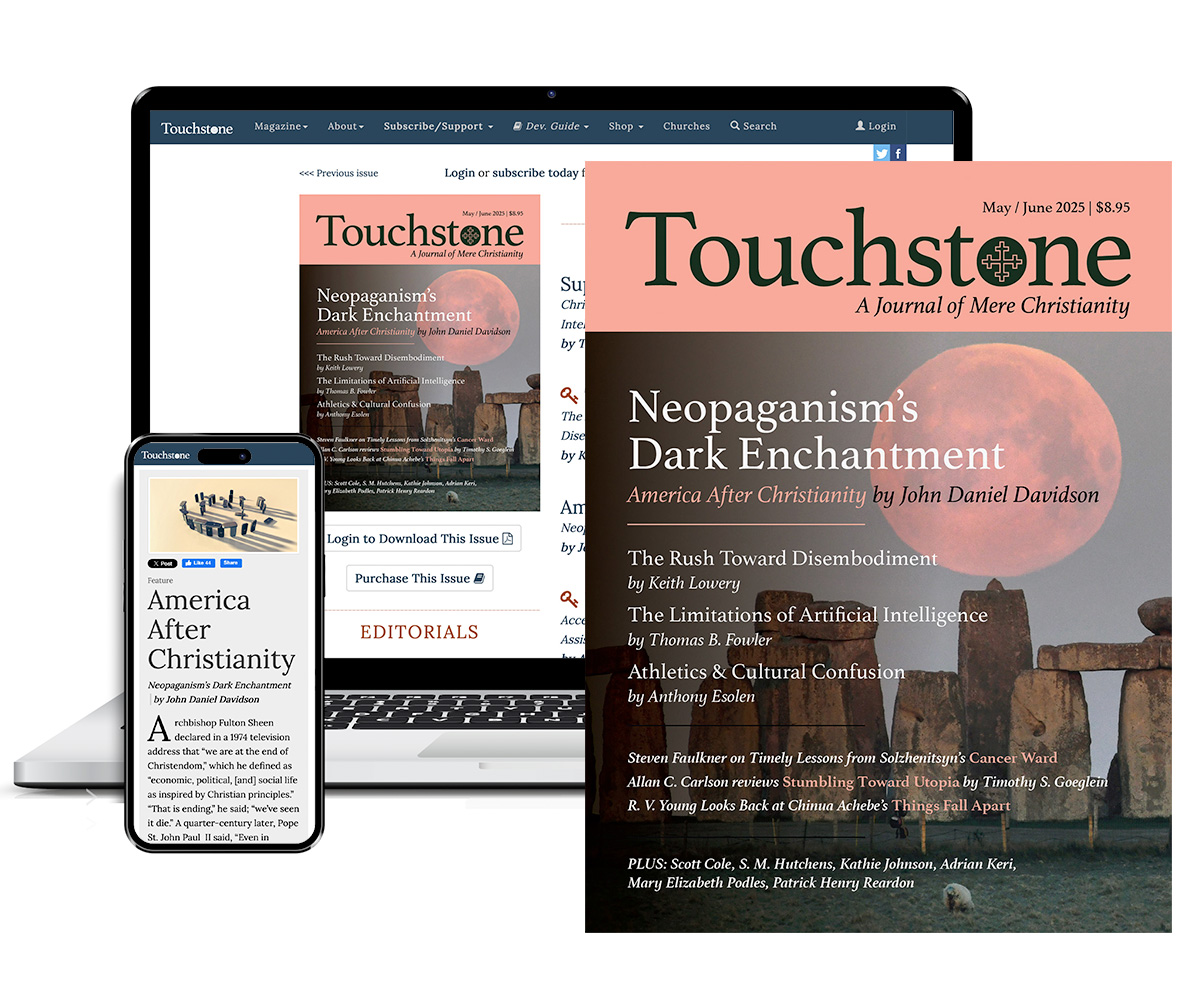
Get six issues (one year) of Touchstone PLUS full online access including pdf downloads for only $39.95. That's only $3.34 per month!
Order
Online Only
Subscription

Get a one-year full-access subscription to the Touchstone online archives for only $19.95. That's only $1.66 per month!
bulk subscriptions
Order Touchstone subscriptions in bulk and save $10 per sub! Each subscription includes 6 issues of Touchstone plus full online access to touchstonemag.com—including archives, videos, and pdf downloads of recent issues for only $29.95 each! Great for churches or study groups.
Transactions will be processed on a secure server.
more on fatherhood from the online archives
more from the online archives
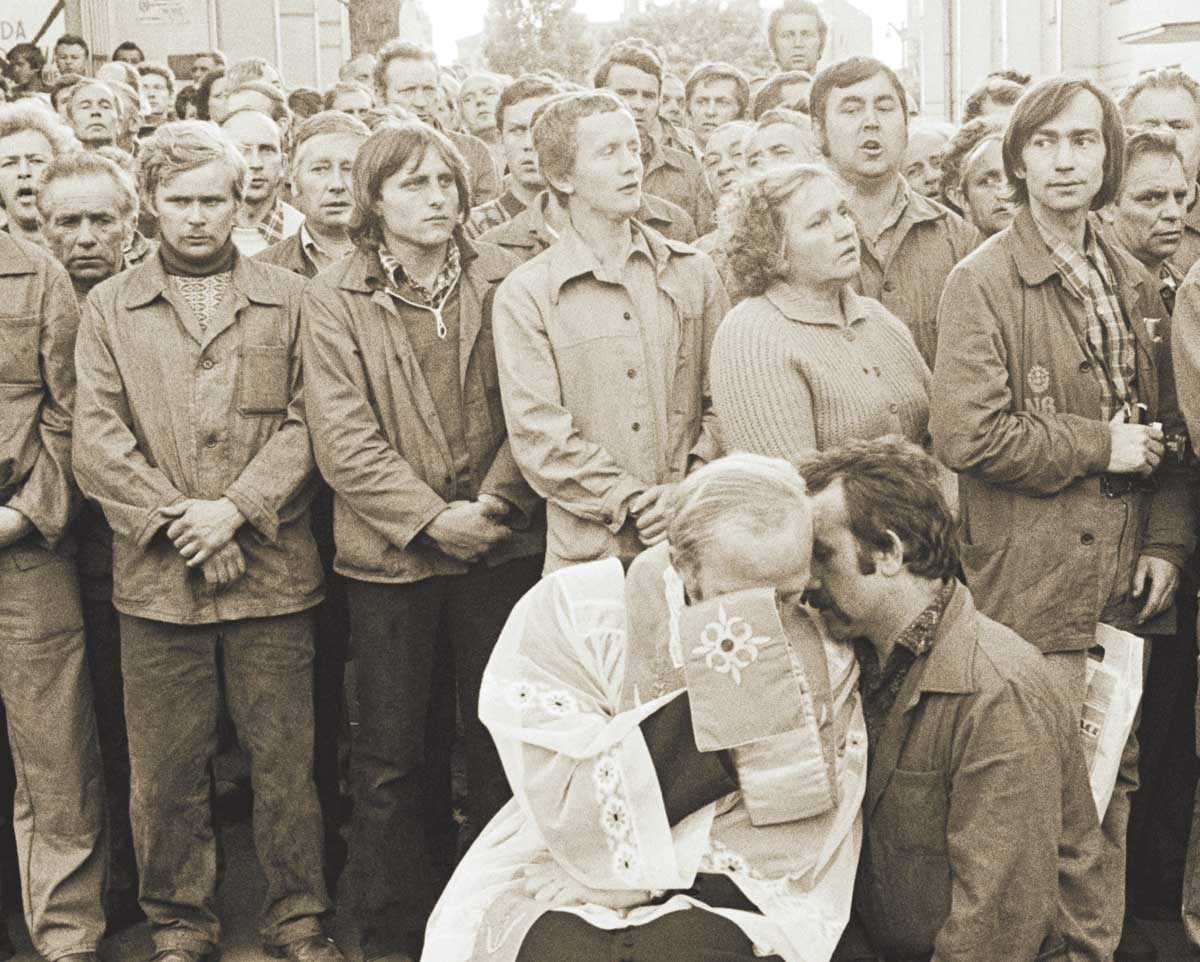
19.10—December 2006
Workers of Another World United
A Personal Commemoration of Poland’s Solidarity 25 Years Later by John Harmon McElroy
calling all readers
Please Donate
"There are magazines worth reading but few worth saving . . . Touchstone is just such a magazine."
—Alice von Hildebrand
"Here we do not concede one square millimeter of territory to falsehood, folly, contemporary sentimentality, or fashion. We speak the truth, and let God be our judge. . . . Touchstone is the one committedly Christian conservative journal."
—Anthony Esolen, Touchstone senior editor




